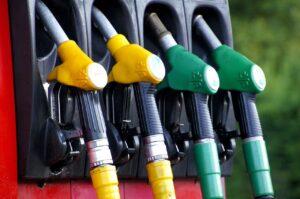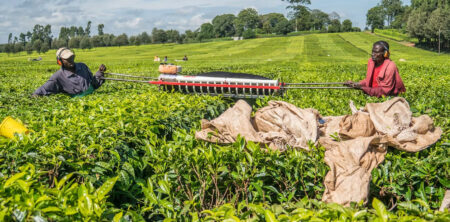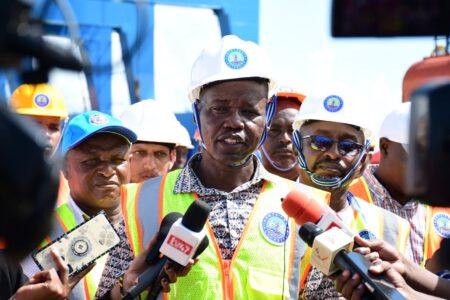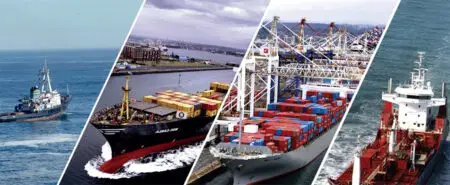- Experts have projected that Kenya’s cost of living will rise as fuel prices continue to increase
- Cytonn Investments said that fuel is a major contributor to Kenya’s headline inflation and fuel prices are a major input cost in most of Kenya’s sectors.
- The experts noted that the business environment is expected to deteriorate even further as consumers are likely to cut spending
Economic experts have projected that Kenya’s cost of living will remain high following the recent hike in fuel prices in the East African nation.
In their latest report, experts from Cytonn Investments said that fuel is a major contributor to Kenya’s headline inflation and fuel prices are a major input cost in most of Kenya’s sectors. The sectors include manufacturing, transport, and energy.
Further, the experts noted that the business environment is expected to deteriorate even further as consumers are likely to cut spending.
The report came days after Kenya’s Energy and Petroleum Regulatory Authority (EPRA) released their monthly statement on the maximum fuel price in Kenya effective 15th June 2022 to 14th July 2022.
In the review, Super Petrol, Diesel and Kerosene prices increased by 6 per cent, 6.9 per cent and 7.6 per cent to KSh 159.1 per litre, KSh 140.0 per litre and KSh 127.9 per litre, from KSh 150.1 per litre, KSh 131.0 per litre and KSh 118.9, respectively, recorded in the last month.
The prices are the highest ever recorded in the country.
According to EPRA, the rise was attributable to several factors including an increase in the average landed costs of Super Petrol by 6 per cent to USD 876.1 per cubic meter in May 2022, from USD 826.8 per cubic meter in April 2022.
It was also on account of an increase in the average landed costs of Diesel by 10.9 per cent to USD 977.4 per cubic meter in May 2022, from USD 899.4 per cubic meter in April 2022. And an increase in the Free on Board (FOB) price of Murban crude oil in May 2022 by 19.7% to USD 112.5 per barrel, from USD 94.0 per barrel in April 2022.
EPRA said the historic hike was also on account of the depreciation of the Kenyan shilling during the period by 1. 1 per cent to KSh 116.9 in May 2022, from KSh 115.7 in April 2022.
Notably, the average landed costs of Kerosene declined by 0.3 per cent to USD 905.6 per cubic meter in May 2022, from USD 908.7 per cubic meter in April 2022.
Kenya’s economy to grow by 5.5% in 2022, down from 7.5% in 2021
However, the fuel prices were supported from further increases by factors including the ongoing fuel subsidy programme under the Petroleum Development Fund which resulted in subsidies of KSh 25.6 for Super Petrol per litre, KSh 48.2 for Diesel per litre and KSh 42.4 per litre on Kerosene during the month.
“Without the subsidies, fuel would have traded at KSh 184.7 per litre for super petrol, KSh 188.2 per litre for Diesel and KSh 170.4 per litre for Kerosene,” the report noted.
Additionally, the removal of suppliers’ margins since October 2021 also supported fuel prices from further increases.

Cytonn’s report further noted that global fuel prices have recorded a 45.2 per cent increase since the beginning of the year to USD 123.7 per barrel as of 16th May 2022, from USD 85.2 per barrel recorded on 3rd January 2022, driven by persistent supply chain constraints worsened by the geopolitical pressures occasioned by the Russian invasion of Ukraine.
These are the highest prices witnessed globally, since 15th March 2012, when prices reached USD 124.3 per barrel. Kenyans have been largely cushioned from the high prices by the fuel subsidy program under the National Treasury.
“However, we have maintained that the programme is unsustainable and will be depleted should the average landed costs of fuel continue to rise,” the experts noted.
Additionally, the National Treasury has indicated that the subsidies are inefficient and have led to misallocation of resources and crowding out of the public spending on productive sectors.
As a result, the government is poised to gradually adjust the fuel prices upwards with a view to eliminating the fuel subsidy.
Further, the government has come under increasing pressure from international partners such as the World Bank to cut down the subsidy program, with the World Bank estimating that the total monthly cost of subsidizing fuel estimated at USD 66.0 million (KSh 7.7 billion).
The National Treasury has also so far spent KSh 67.0 billion in the FY’2021/22 on the subsidy program, with an expectation that Kshs 84.0 bn will be spent by end of the FY’2021/2022. This would leave a paltry Kshs 16.0 bn in the Kshs 100.0 bn fund that was meant to cover FY’2021/2022 and FY’2022/2023.
Nigerian Airlines: Jet fuel shortage threatens to halt aviation the industry











